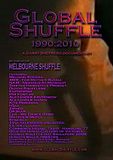These artists have latched onto a hugely trendy influence: a genre that has been bubbling under the surface for 25 years, yet remained surprisingly active with just as tight-knit a community and aesthetic as any other genre. I'm talking about Sid tunes, music created using the venerable Commodore 64 home computer.

The Sid chip was created by an engineer named Bob Yannes in 1981 for inclusion in what would become one of the best-selling games machines of the eighties. Yannes came from the synthesiser industry and ended up including a whole bunch of features that his superiors hadn't asked for, including envelopes, three separate ring modulators, three oscillators and fairly advanced filtering. The result was an analog/digital hybrid way ahead of the competitors in the field, and an integral part of the success of the C64.
Soon enough the chip had attracted a large cadre of talented musicians, nearly all of them European, who by the mid-eighties started realising the full possiblities of the notoriously ill-documented chip. Martin Galway, Rob Hubbard and Ben Dagliesh were all British. Jeroen Tel was Dutch. Chris Hülsbeck was German. They used the chip mathematically, discovered a way to put in crude samples using flaws in the design, and created some of the most memorable computer game music from the eighties.
At this point Sid tunes could hardly be called a genre, but that all changed with the advent of the demoscene, which started out on the C64. Amateur musicians, again almost all European, would create ever-more-spectacular tunes using the limited chip, and soon a community and a party scene led on to a well-developed aesthetic. The genre gained a canon, grew immensely and was catalogued thoroughly. The biggest Sid collection, the HSVC, contains some 30 000 tracks, the majority of which have been created long after the lifetime of the machine as a gaming platform.
So, what does it all sound like? The epithet "unstable" is probably not a bad one, internal distortion and slightly imprecise oscillator control creates a unique sound that can't properly be emulated. (Sidplay is probably the next-best choice for windows users, you'll need it a bit below.) Here's Martin Galway's classic Wizball music, which was voted the best Sid tune of all time:
As you can hear the typical sound is rather more "very fake live instruments" and "strange sounds" than ordinary synth, with lots of pitch-bending swoops, little tight arpeggios and portamento simulating everything from ghostly theremin to beatboxing. There's a certain something appealing about the attempt to eke something real out of the little chip while pushing its wobbly technical boundaries, and on classics like Last Ninja tune 6 there are almost touches of beauty. Sometimes it goes overboard with complexity - Rob Hubbard's 16-minute near-prog Knucklebusters is a good example, however excellent the detail may be - and the percussion and bass suck, but there's something about those thin monophonic synths that still touches people today.
My personal favourite (though not typical in its simplicity) is Hubbard's Commando, a simple and apparently throw-off reimagining of a Japanese arcade theme that is pushed into a living room dance floor classic by little militaristic blasts of digital gunfire, seemingly thrown in at random. Brilliant!
So how did the Sid scene belatedly end up in the spotlight? Part of it is probably the resurgent interest in chiptune music and bitpop in general, with club nights and mainstream bands. Another instrumental factor is the Sid Station, a hardware synth using the Sid chip that's found its way into the setup of a surprising array of mainstream artists. (Timbaland famously abused it.) But I think what's perhaps the most important aspect is how well the more meditative, meandering Sid pieces fit into the current electro-based soundscape, which is equally based on unstable, warping synthesis. "Wonky" indeed.










































1 comment:
hey, just stumbled across this article. nice one! i think you're the only that talks about sid tunes as a genre, though. :)
tech-stuff: the c64 doesnt have three separate ring modulators (or, hmm, does it?), the 'unstableness' is due to the myriads of different filter distortions (mainly on the various 6581-chips), and a bug with the volume envelopes (oscillators need to be reset just before the next attack in order to fix it, but it's not 100%). the control of the oscillators is very detailed on the SID chip, especially if you compare to one of my other favourite sound chips: the Atari Pokey. (it's dirty and nice like the SID)
it's very refreshin to read an article that doesn't just talk about videogame-nostalgia-style anyway! keep it up!
-goto80
Post a Comment